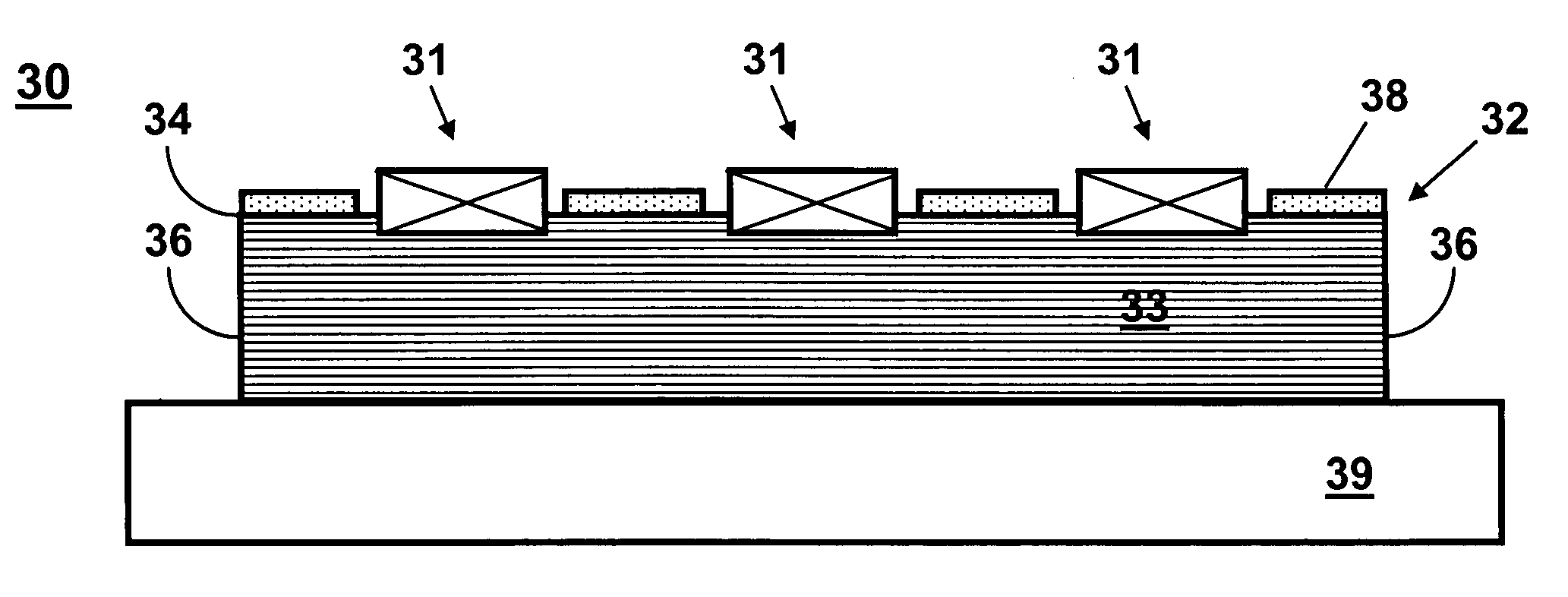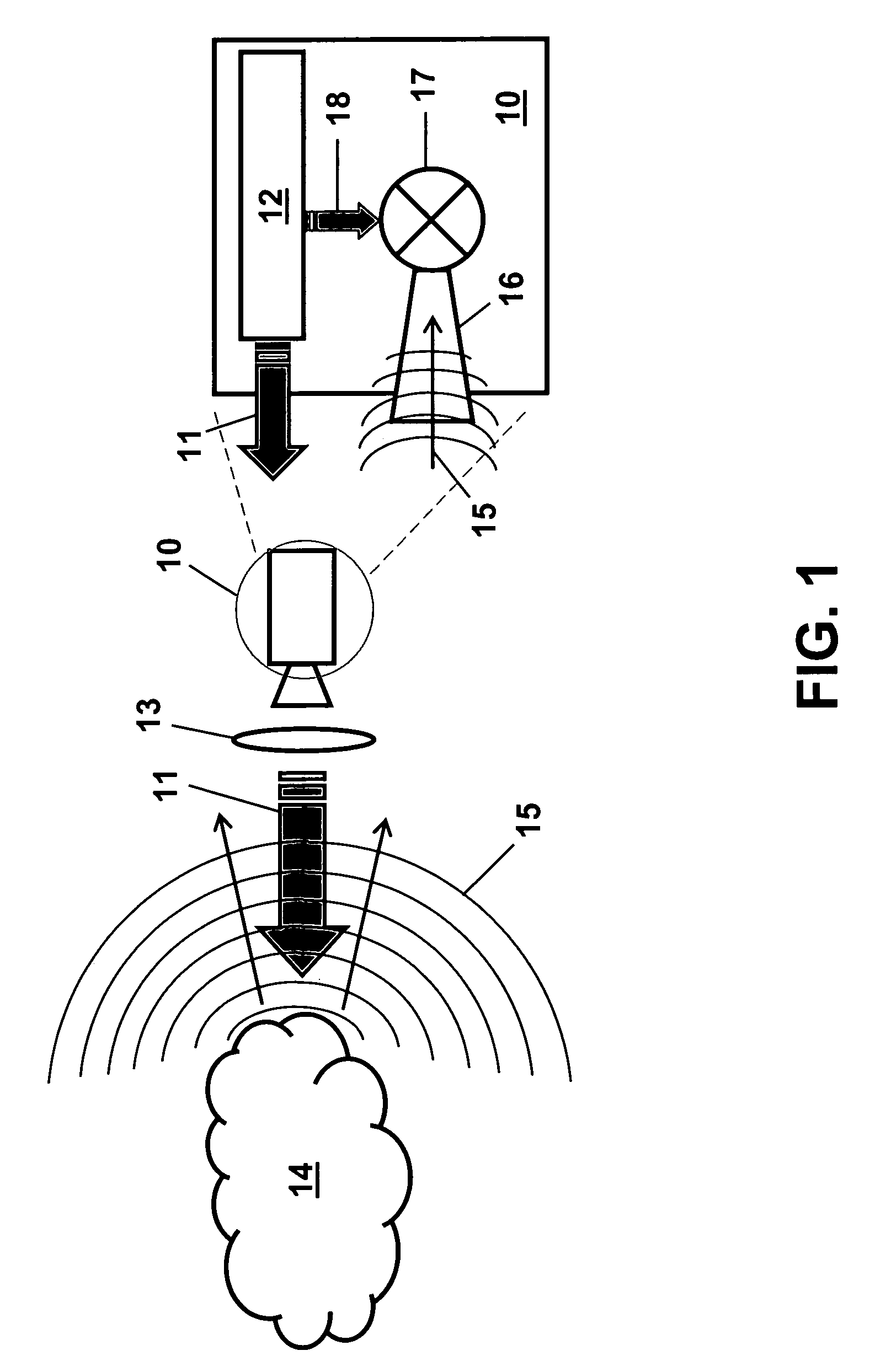Integrated heterodyne terahertz transceiver
a heterodyne terahertz transceiver and integrated technology, applied in the field of terahertz radiation technology, can solve the problems of limited range and thermal background that would prevent success in these types of environments, and achieve enhanced signature development, increased signal-to-noise measurement, and enhanced spectroscopy
- Summary
- Abstract
- Description
- Claims
- Application Information
AI Technical Summary
Benefits of technology
Problems solved by technology
Method used
Image
Examples
Embodiment Construction
[0032]In FIG. 1 is shown a schematic illustration of an active remote sensing system comprising a heterodyne terahertz transceiver 10 that integrates a terahertz transmitter with a terahertz receiver. The transceiver 10 transmits terahertz radiation 11 from a QCL source 12 at a known frequency. The terahertz radiation 11 can be collimated by optics 13 to illuminate a remote object, or target 14. A return terahertz signal 15 is radiated from the target 14 and is collected by the optics 13 and detected by the transceiver 10. The returned signal 15 is received by a horn or antenna 16 and coupled to a mixer 17 of the transceiver 10. The mixer 17 can comprise a Schottky-type diode (for heterodyning, the Schottky diode is referred to herein as a mixer). A portion of the transmit power is coupled from the QCL 12 to the mixer 17 as a LO 18 to define a detection frequency reference. An IF circuit (not shown) processes the mixer output. The mixer 17 therefore detects terahertz radiation withi...
PUM
 Login to View More
Login to View More Abstract
Description
Claims
Application Information
 Login to View More
Login to View More - R&D
- Intellectual Property
- Life Sciences
- Materials
- Tech Scout
- Unparalleled Data Quality
- Higher Quality Content
- 60% Fewer Hallucinations
Browse by: Latest US Patents, China's latest patents, Technical Efficacy Thesaurus, Application Domain, Technology Topic, Popular Technical Reports.
© 2025 PatSnap. All rights reserved.Legal|Privacy policy|Modern Slavery Act Transparency Statement|Sitemap|About US| Contact US: help@patsnap.com



